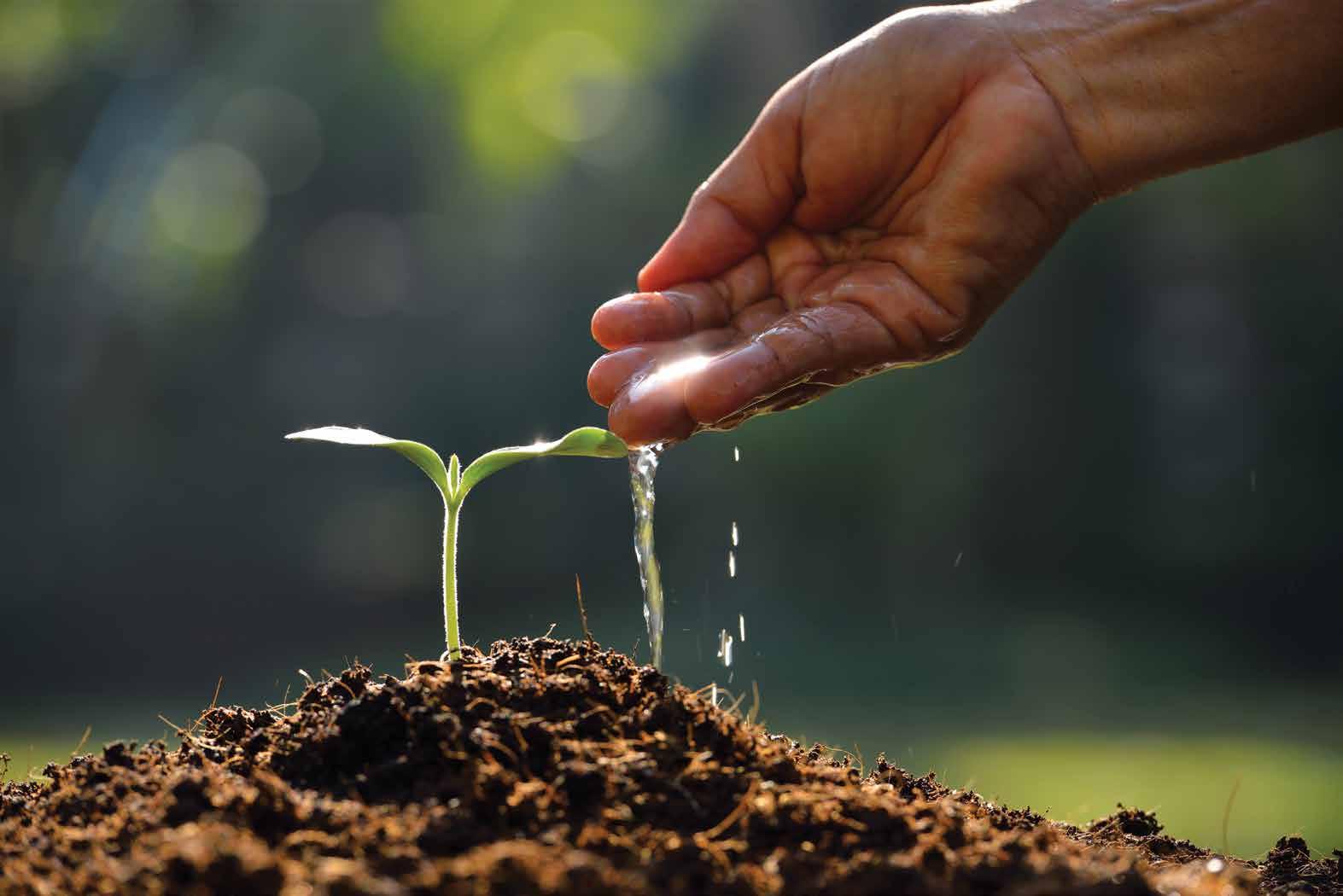
4 minute read
Agriculture and mining
What does the FUTURE is breaking ground internationally, currently having more 2 000 dealers selling its products in more than 85 countries. HOLD? GLENNEIS KRIEL looks at the challenges and trends dominating the agrochemicals market Hart also sees opportunities for more South African-based developed biological control products such as parasitic and predatory insects, essential oils, viruses and W hile the future of agrochemicals looks bright, according to Deloitte’s The Future of Agrochemicals report, considering the rising demand for food spurred by global population giants such as BASF, Bayer, DuPont, Monsanto and Syngenta. She adds that the quest for environmentallyfriendly solutions such as biopesticides, adjuvants, biofertilisers and biostimulants bacteria that may help to keep problem, insects and diseases in check. DID YOU KNOW? The local agrochemical market sector growth, companies will have to become more nevertheless presents new opportunities. is expected to grow at 10–15 per cent innovative to remain competitive. Entry costs that are lower than for chemical per year over the next 5–10 years.
Challenges reshaping the industry include solutions and more stringent regulations that Source: Fertiliser Association of South Africa longer product development cycles and became effective in 2017, combined with escalating costs, increasing stringency of increased awareness, make it more diffi cult Increased competition and the development regulatory requirements, environmental for fl y-by-nights. of precision technology is another factor concerns and the rise of digital technologies, changing business dynamics for crop according to the Deloitte report LOCAL PLAYERS protection and fertiliser companies, says Hard.
Dr Nicole Hart, chairperson of the Fertiliser Despite the market segment being dominated Where companies in the past only focused Association of Southern Africa and commercial by international players, local players are on products development and sales, more general manager of Omnia Fertiliser, says commanding a substantial market share, and more are incorporating digital solutions that the high costs of product development especially on the humate and kelp into their services offerings. The use of and registration for chemical crop protection side. Oro Agri, which sells orangeremote sensing via satellite or drones, for make it increasingly diffi cult for new and based biocontrol plant products, is example, is making it easier to identify smaller players to compete against global one South African company that and address crop stressors, which can “The high costs of product development and registration for be caused by anything from nutrient and water defi ciencies to insect chemical crop protection make it increasingly difficult for new attacks and diseases.
and smaller players to compete against global giants.” – Dr Nicole Hart, Chairperson, Fertiliser Association of Southern Africa Dr Nicole Hart
INCREASED DEMAND
Renewable energy machinery and electric vehicles are increasing the demand for lithium, cobalt, chrome, copper and nickel.
Source: University of Technology in Sydney Institute for Sustainable Futures JOB LOSSES
The mining industry has shed about a 10th of its workforce in the past decade, equating to more than 50 000 jobs.
Source: McKinsey & Company: Putting the Shine Back Into South African Mining report
Challenging times for local mining
The cost of mining in South Africa has increased considerably over the past decade, due to diminishing general ore grades, and accessibility to ores becoming more challenging as underground and surface mines get deeper. The fall in the global demand for various mineral commodities in combination with price and currency volatility has exacerbated the situation.
Ralf Hennecke, general manager of technology and marketing at BME, identi es technology and innovation as key drivers of the industry’s future sustainability, with new technologies, automation, and digitalisation promising improved ef ciencies, reduced costs, and enhanced safety.
These technologies will become increasingly important as labour becomes more expensive and low-risk mines become exhausted, forcing companies to venture but we need to build investor con dence by into areas where extraction and processing addressing deterrents varying from policy were previously considered too dangerous instability and volatile labour relations to or costly. “South Africa cannot afford to fall political uncertainty, water shortages and behind in terms of global best practices, load shedding,” says Hennecke. intelligent mining and an industry 4.0 world,” He adds that the drive for renewable says Hennecke. energies to combat climate change will present new opportunities for South Africa STIFF COMPETITION as the country contains many South Africa is not only competing strategic commodities and vast against other global players to resources required for renewable deliver ore and commodities technologies. Simultaneously, competitively to global destinations pressure is bound to increase that are becoming increasingly for mining companies to reduce protective and unstable, but is their environmental footprint, also competing for foreign direct which would be dif cult investment. “South Africa still has considering almost 80 per cent much value to offer, signi cant of our energy is generated infrastructure and world-class skills, Ralf Hennecke from coal.








